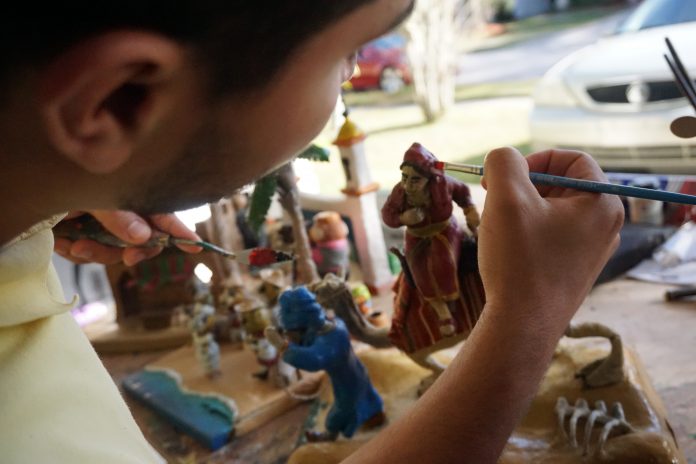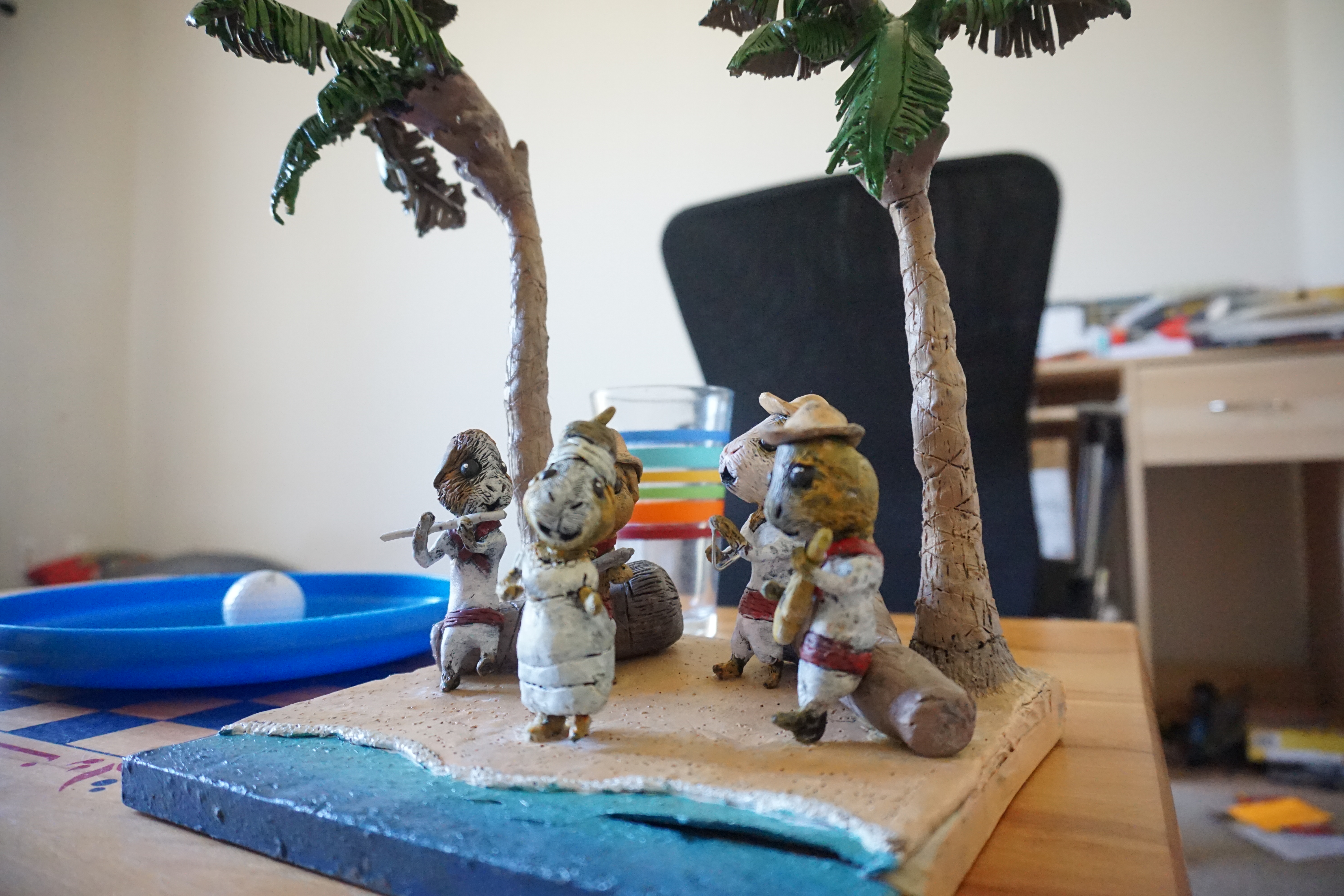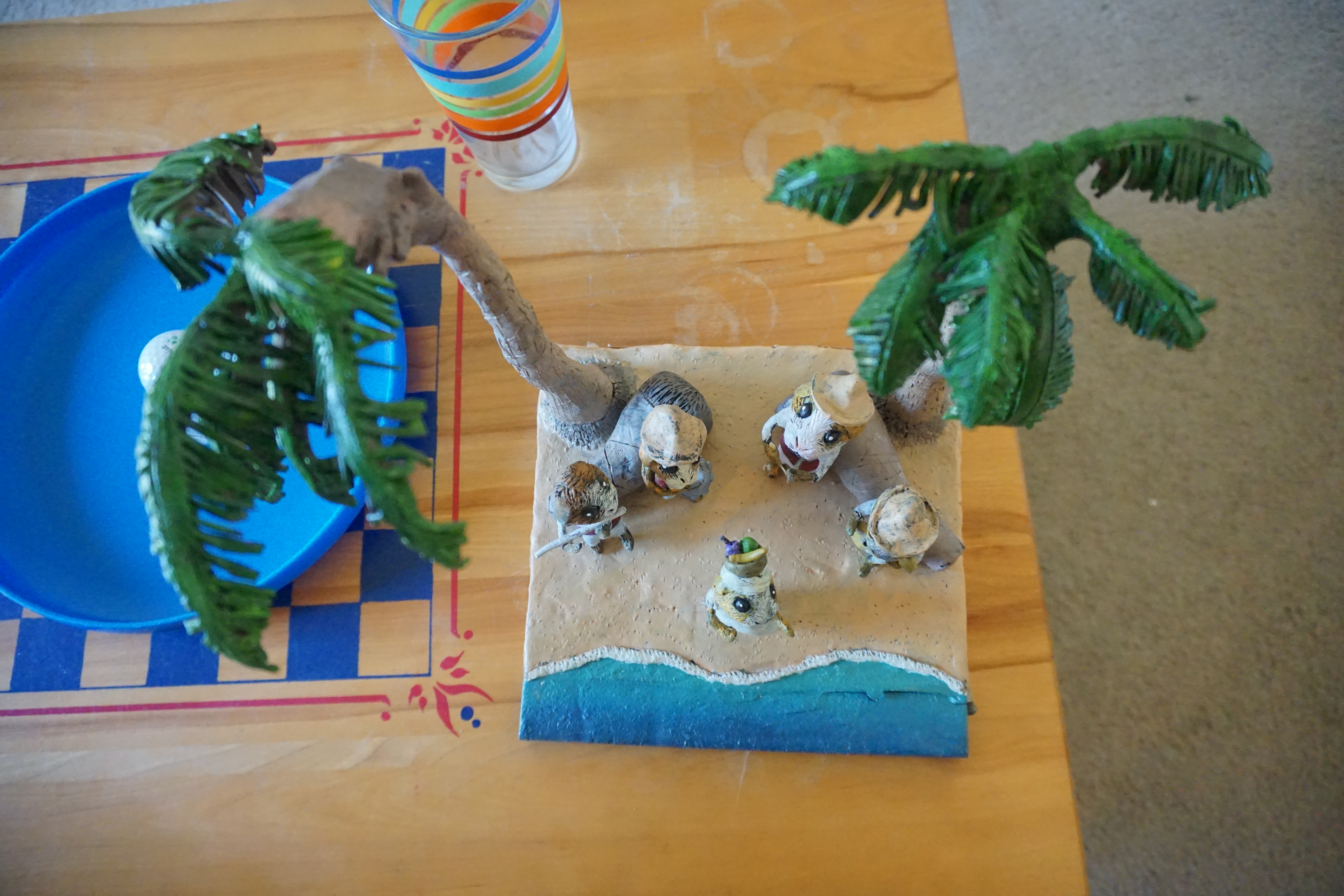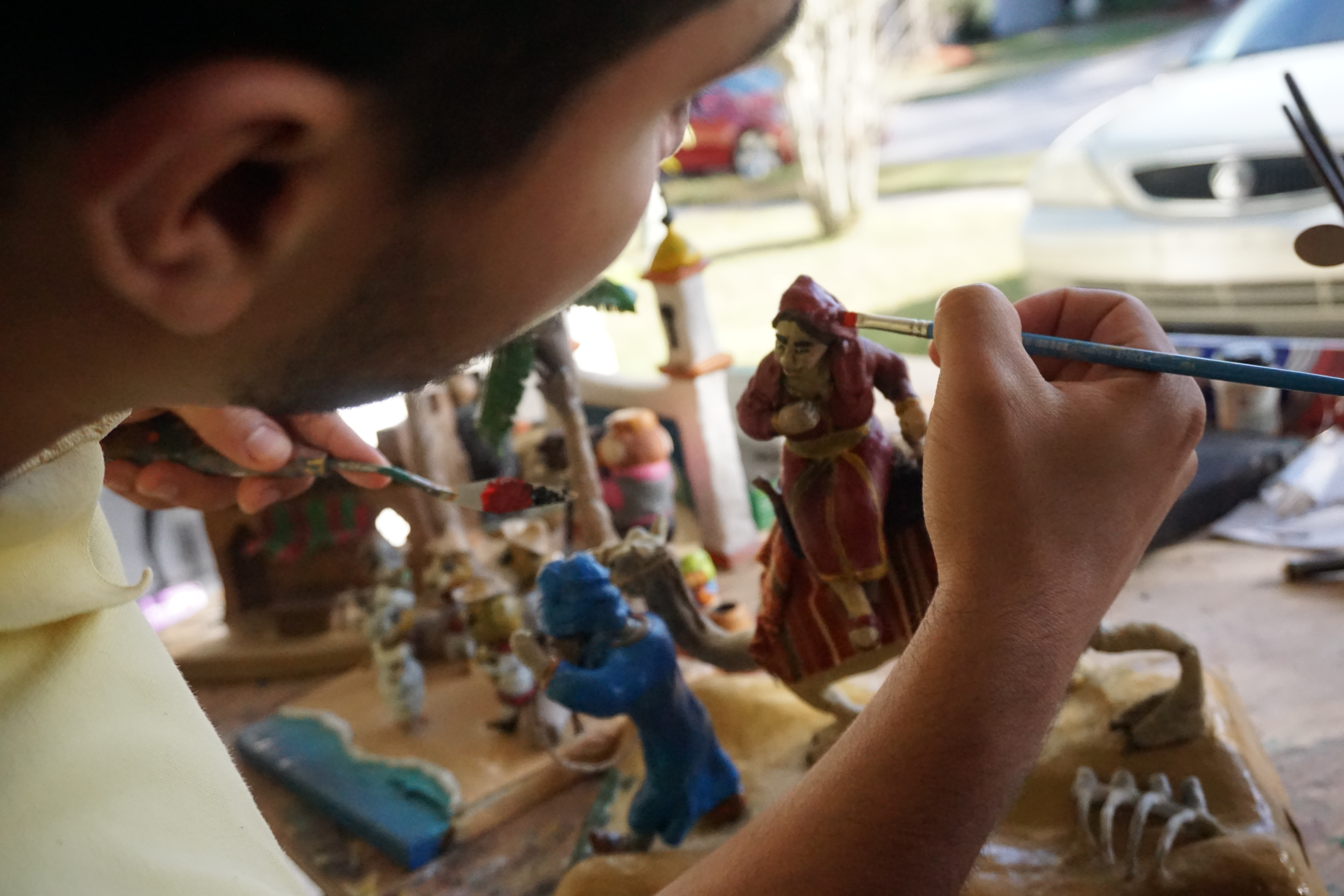
A student shared his dreams in working in animation and shared his original piece which combines culture and cartoon.
David Organista is a junior animation major from Cali Colombia whose family came from the city of Pasto, Colombia. The unique culture of Pasto included many festivals with a reoccurring theme of Guinea pigs.
Organista said living in the city of Pasto inspired him greatly and fostered his love for cultured art, and lead to his life dream of becoming an animator. Organista’s love of art and creation derived from his passion for preserving his culture wherever he is.
“I cannot make uncultured art,” Organista said. “Culture is the main thing that drives me because it’s something I don’t want to lose. Art and the process is therapeutic for me.”
Culture and animation had always been Organista’s main inspirations. The Guinea pig a native rodent and cultural symbol of Pasto commonly found in dishes has been a staple in Organista’s pieces, he said.
“I never saw it [eating Guinea pigs] as strange, and then when I was growing up [in the U.S.] and told them I would eat guinea pigs, they would be like what in the world!?” Daniel Organista, David Organista’s brother said. “They wouldn’t understand it, but for me it was pretty normal.”
Marta Cabrera, David Organista’s mother said Guinea pigs are a typical popular dish of Pasto and have been incorporated into many of the festivals of the city, especially in the month of January.
David Organista spent four years of his childhood in Pasto, Colombia, from 2005-2009. Pasto’s signature animal is the Guinea pig which they are now famous for, in costumes and toys but most common in dishes fried until the skin is crisp. These signature Guinea pigs are what inspired David Organista’s favorite piece.
“How often do you see anthropomorphic guinea pigs on a beach?” David Organista said. “The piece reminds me of Colombia, and I see it as the ending as they sing and dance on the beach in the sunset.”
David Organista said his parents who live in Miami, and his brother who lives in Bogota, Colombia loved his pieces and described them as very supportive of his career aspirations in animation.
“David is really into the meaning of what he creates,” Daniel Organista said. “In his art and animation, it always has his style to it, he doesn’t copy from anyone. It stands out. It’s definitely original.”
David Organista shared when he first discovered his love for creation.
“I was about nine or 10 I was always playing with Legos and I remember seeing Lego animations on YouTube and that’s what I started doing,” David Organista said.
Cabrera said she always knew David had a gift for creating and was always impressed with what he made. David Organista said he quickly realized animation wasn’t too far off from a three-dimensional creation.
“I started building and I realized all you need is a camera,” David Organista said. “I took pictures of Legos and then moved them slightly to create this movement that lead to animation and a start of something. I would build sets and my actors were animated characters with Legos and would create a plot.”
The hope would be to bring these animals to entertainment one day, David Organista said. He said his biggest dream is to direct but he would be open to any creative position in the animation industry. David Organista said there is one main component to make his art his own and that he wants every one of his pieces to have.
David Organista said his favorite aspect of the artistic process is the fashion.
“I always think how I can get a long story into one frame,” David Organista said. “I like fashion, because you can look at a woman and say where is she and look at a man and ask what time of day it is?”
Pieces can take him from four days to two weeks depending on the size and complexity, David Organista said.
“I like creating nature and animals because you can be more creative,” David Organista said. “A person is the hardest thing you can do in drawing and animation, because we look at them every day.”
David Organista said his true talent isn’t necessarily in artistic ability, but a mindset.
“I believe anything I do paint, art or sculpture anyone can do if they have patience,” David Organista said. “I think the true talent is in the patience. I had the patience to say maybe I’m not good at sculpture now, but I want to be good.”
David Organista said sculptures and animation are a unique art that is in its own lane of importance.
“Each piece represents a conservation of culture, because every day we always forget a little piece of yesterday,” David Organista said. “You can write, you can record, but to really see things and feel things to know how people used to dress and be is different. Sculpture is the tangible medium.”









